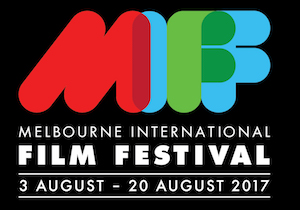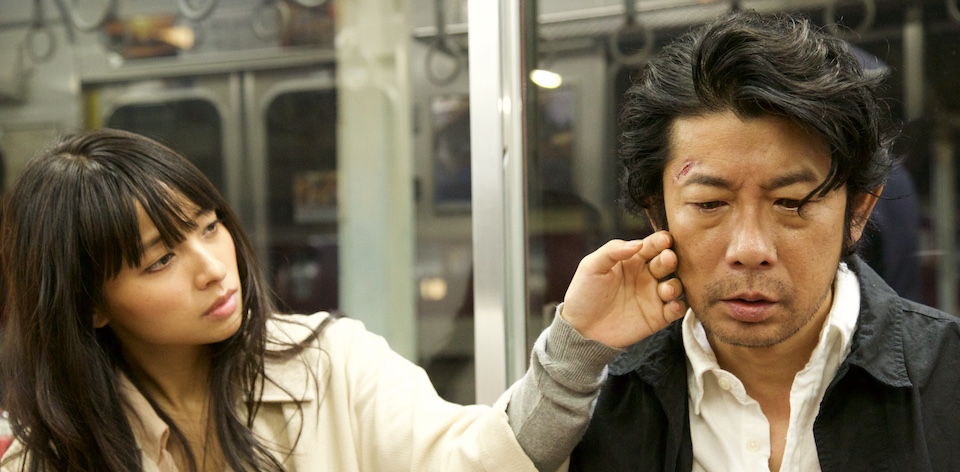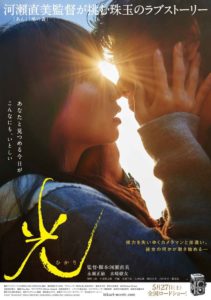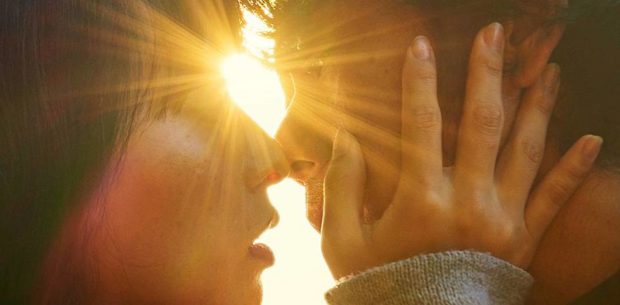Director Naomi Kawase was the youngest winner of the Camera D’Or in 1997 for Moe no Suzaku, and her films have continued to raise the bar of documentary realism within fictional narratives. With RADIANCE (光) she explores the notion of experiencing a film from the perspective of the visually impaired, filtered through a less than conventional romantic thread.
Misako (Ayame Misaki) writes scripts for the audio descriptive version of films. While working on a prestige film, Masaya Nakamori (Masatoshi Nagase), a photographer who has almost lost his sight, challenges her interpretation and her disconnected outlook on life.
RADIANCE won the Prize of the Ecumenical Jury at the Cannes International Film Festival this year, a prize designed to “honour works of artistic quality which witnesses to the power of film to reveal the mysterious depths of human beings through what concerns them, their hurts and failings as well as their hopes.” Kawase’s script delivered on this quite literally. Misako and Masaya are both asked to reinterpret what it means to “see,” and the difference between watching and feeling a piece of art.
Running parallel to the primary story is a film-within-a-film. While the details of the plot are sketchy, the final scene shows a frail protagonist attempting to climb a sand dune for some kind of emotional breakthrough. It’s a fairly heavy-handed analogy for the bridge that Misako and Masaya have to cross as well, and Misako’s failure to write an adequate description is indicative of her social distance. So too is Masaya’s inability to imagine the imagery.
Kawase keeps our attention intimately fixed on Misaki and Nagase, heightening the realism of the approach. At its most effective, such as Nagase’s excellent drunken turn as a man who refuses to let go of his past, it’s impossible not to remain transfixed. When Kawase departs from this laser focus, such as a sub story on Misako’s mother wandering off, these elements feel tacked on and in search of deeper meaning.
“It’s like a parallel world you gradually become a part of,” says Masaya of listening to an audio descriptive film. So it’s ironic that while the handheld camera is incredibly beautiful in parts, here it also creates some distance. The shakiness and grain certainly provide an immediacy, but they are a stylistic barrier as well. Once you notice the construct, it’s difficult to ignore it.
As RADIANCE loops back to where we began, a group of people that includes Masaya sitting down to the premiere of the film-inside-a-film, that parallel world is inviting us to question what we have seen. As the film tells us, “Nothing is more beautiful than what disappears before your eyes.”
RADIANCE played as part of the Melbourne International Film Festival. It is also the Closing Night film of the Japanese Film Festival in October – December.
[stextbox id=”grey” bgcolor=”F2F2F2″ mleft=”5″ mright=”5″ image=”null”] 2017 | Japan | DIR: Naomi Kawase | WRITER: Naomi Kawase | CAST: Ayame Misaki, Masatoshi Nagase | RUNNING TIME: 101 minutes | DISTRIBUTOR: MIFF/JFF (AUS) | RELEASE DATE: 4 August 2017 (MIFF)[/stextbox]
2017 | Japan | DIR: Naomi Kawase | WRITER: Naomi Kawase | CAST: Ayame Misaki, Masatoshi Nagase | RUNNING TIME: 101 minutes | DISTRIBUTOR: MIFF/JFF (AUS) | RELEASE DATE: 4 August 2017 (MIFF)[/stextbox]







